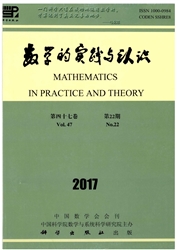

 中文摘要:
中文摘要:
保险损失数据的一个重要特点是尖峰厚尾性,即既有大量的小额损失,又有少量的高额损失,使得通常的损失分布模型很难拟合此类数据,从而出现了对各种损失分布模型进行改进的尝试.改进后的模型一方面要有较高的峰度,另一方面又要有较厚的尾部.最近几年文献中出现的改进模型主要是组合模型,即把一个具有非零众数的模型(如对数正态分布或威布尔分布)与一个厚尾分布模型(如帕累托分布或广义帕累托分布)进行组合.讨论了这些组合模型的性质和特点,并与偏t正态分布和偏t分布进行了比较分析,最后应用MCMC方法估计模型参数,并通过一个实际损失数据的拟合分析,表明偏t分布对尖峰厚尾损失数据的拟合要优于目前已经提出的各种组合模型.
 英文摘要:
英文摘要:
An important property of insurance loss data is their leptokurtic shape, i.e. in- cluding many small losses and few large losses, which makes the common loss models can not fit them well enough, and therefore some effort has been made to improve current loss models. Improved loss models should have both high peaks and fat tails. In the past several years, some composite models have been suggested in the literature and these models usually composite one common distribution model (e.g. lognormal distribution or Weibull distribution) with one fat tail distribution model (e.g. Pareto distribution or generalized Pareto distribution). The paper compares these composite models with skew t distribution and skew student-t normal distribution, and then applied them to a real loss data set using MCMC to estimate param- eters. The result shows that the skew t distribution is superior to these proposed composite models in fitting the loss data with high peak and fat tail.
 同期刊论文项目
同期刊论文项目
 同项目期刊论文
同项目期刊论文
 期刊信息
期刊信息
